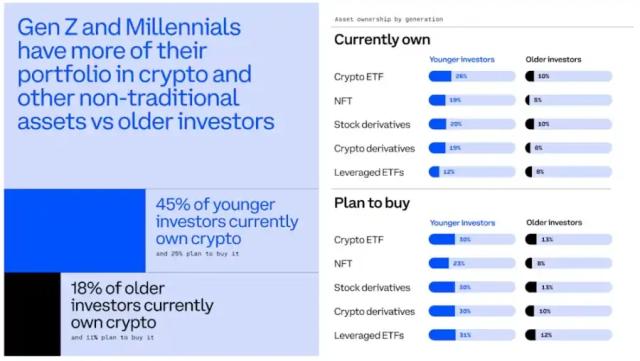
1. How likely is a significant drop in the S&P 500 index this year? How should I prepare?
Michael Cembalest, Chairman of Market and Investment Strategy at JPMorgan Asset Management, says the S&P 500 has risen more than 20% annually for the past two years, a scenario that has occurred only 10 times since 1871. Cembalest expects the stock market to rise by the end of this year, but he also says there could be a drawdown of up to 15%, which he notes is not uncommon. Over the past 100 years, the S&P 500 has fallen 10% or more in 60 years.
Given the potential for greater market volatility, a better question is: when do you need this money? The market always reaches new highs after each downturn, so if you can wait a few years before cashing out, you won't have a problem. Also, carefully examine your asset allocation. Holding just the S&P 500 index is not enough, as the top 10 stocks (mostly tech) now make up about two-fifths of the index's market value, compared to around one-quarter in 2000.
Ben Inker, Co-Head of Asset Allocation at GMO, says one diversified approach is to buy an equal-weighted ETF that tracks the index, where each company makes up about 0.2% of the value. He says, "Over the long run, this is a pretty good way to avoid getting too caught up in whatever the current investment fad happens to be."
2. Does the traditional 60/40 investment portfolio still make sense?
For decades, financial planners have recommended a 60% stocks, 40% bonds portfolio, which has provided decent returns in the past with much lower risk than holding stocks alone. However, the logic behind this portfolio (that bonds will rise when stocks fall, and vice versa) completely broke down in 2022 as inflation soared and the Federal Reserve aggressively hiked rates, battering both stocks and bonds. Recently, U.S. stocks and bonds have often moved in tandem.
Here is the English translation of the text, with the specified terms translated as requested:More and more investment managers are recommending allocating a portion of the 60/40 portfolio to so-called alternative assets - private securities that do not move in lockstep with public market assets. Adding these assets may introduce new risks, but could also boost long-term returns. Sinead Colton Grant, chief investment officer at BNY Mellon Wealth Management, says companies are going public later, meaning public market investors are missing out on the higher returns in the early stages. "If you don't have access to private equity or venture capital, you're missing out on that opportunity." She believes that to replicate the performance of the 60/40 portfolio from the late 1990s, private securities should make up around a quarter of the investment portfolio.
Not everyone agrees with this view. Jason Kephart, director of multi-asset ratings at Morningstar, says adding private assets to the 60/40 portfolio "adds complexity and fees, and there are also some questions around the valuation methodology." He says the beauty of the 60/40 strategy is its simplicity, making it "easier for investors to understand and stick with the portfolio over the long term."
3. If I am risk-averse, is it worth investing in US Treasuries? Will the bond vigilantes return?
Bond vigilantes refer to large investors who demand higher yields on government debt to express their dissatisfaction with excessive government spending. While the details of the new administration's spending plans are still unclear, there are concerns that the US budget deficit could worsen in the coming years, potentially meaning higher Treasury yields are on the way.
The 10-year Treasury yield is currently around 4.6%, near an 18-year high. So should investors seize this opportunity? Leslie Falconio, head of taxable fixed income strategy at UBS Global Wealth Management, says the firm had been favoring locking in yields on 5-year Treasuries until recently. But she believes that with UBS forecasting economic growth to remain above trend but slow, and inflation to decline, 10-year Treasuries around 4.8% to 5% could present a good buying opportunity. As for 30-year Treasuries, she says: "Given the current volatility and policy uncertainty, we don't think it's prudent to extend the investment horizon to 30 years at these yield levels, as the risk-reward is not commensurate."
Of course, for those with high-yield savings accounts or one-year CDs, a 4.6% yield may not seem particularly high, as those products can offer similar returns. But savings account rates can change at any time, and with CDs, there's no guarantee you'll get the same rate when it comes time to renew in a year.
4. How can I protect my assets from the impact of inflation?
President Trump has vowed to "defeat inflation," but at the same time, he is pushing for higher tariffs and tax cuts, which could exacerbate inflation. Amy Arnott, portfolio strategist at Morningstar, says for investors in their 20s and 30s, inflation may not be the primary concern, as wages should be able to keep up with price increases over time, and stock values generally grow faster than inflation. Arnott believes "stocks are one of the best inflation hedges over the long term."
Those hoping to retire in the next 10 years may want to consider dedicated inflation-hedging tools, such as commodities. Arnott says a diversified commodities fund may include oil, natural gas, copper, gold, silver, wheat and soybeans. With few such funds performing well recently, Arnott suggests comparing the risk-adjusted returns of these investments, rather than focusing on absolute performance.
For retirees or those planning to retire soon (who can't offset inflation through pay raises), Arnott recommends buying US Treasury Inflation-Protected Securities (TIPS) linked to the Consumer Price Index. She suggests buying 5-year and 10-year TIPS, rather than 30-year, as the latter carries too much risk for those not planning to hold to maturity.
5. Should I add cryptocurrencies to my portfolio?
With a president who has launched a , and the Treasury Secretary Scott Bessent disclosing (and selling) his holdings in a fund, currencies are looking increasingly mainstream. Investors can now buy ETFs, with billions of dollars flowing into the Trust () in its first year, helping drive prices up nearly 60% in the six weeks after the election.
However, the long-term prospects for currencies remain highly uncertain; , for example, has recently pulled back. As such, some advisors suggest that investors keen to add currencies should limit their exposure to under 5% of their portfolio; for those nearing retirement, the allocation should be even lower. Matt Maley, chief market strategist at Miller Tabak + Co., says younger investors can allocate a slightly higher percentage to currencies, but only if they balance the risk by investing "in companies with good cash flow and stability." "You wouldn't want 10% in and 90% in tech stocks."
6. Has the AI bubble burst?
The two-year bull market in AI stocks was dealt a blow in January, as a chatbot developed by startup forced investors to rethink some fundamental assumptions. said it was unable to access the most advanced semiconductors, and instead rapidly developed a model using lower-cost chips that appeared to rival the capabilities of leading US AI models by some metrics. On January 27th, NVIDIA, the company leading advanced AI chips, saw its stock price plummet 17%, wiping $589 billion off its market value, the largest single-day drop in US stock market history.
The possibility that AI may not require expensive chips has raised questions about the valuations of NVIDIA and other US AI giants. Analysts are closely studying 's model, trying to verify its claims and assess whether the US AI frenzy has reached a peak. What is certain is that China's progress in this technology has been faster than many imagined. Some investment managers see hope in , as if more companies and consumers can afford the technology, AI could have a greater impact. However, the high valuations of leading tech stocks have made some portfolio managers cautious about putting new money to work, instead favoring undervalued areas of the US market like healthcare and consumer staples, or seeking better opportunities abroad.
7. How much impact will climate change have on my retirement plan?
Short answer: Significant. For the vast majority of retirees, home equity is their most valuable asset, especially if they have lived in the same house for decades and paid off their mortgage. Fully owning one's home can provide housing cost stability and insulate against future rent increases. But as the frequency of extreme weather events increases, the soaring costs of homeowner's insurance are undermining this logic.
According to research on over 47 million households, homeowner's insurance premiums rose an inflation-adjusted 13% on average from 2020 to 2023. But many major insurers are no longer offering new home insurance policies in high-risk areas, or providing only limited coverage - especially in the sunny coastal communities where many Americans spend their retirement years. For example, in 2021, about 13% of voluntary home and fire insurance policies in California were not renewed.
Clearly, more and more retirees are feeling forced to go without insurance due to cash constraints. According to Insurance Information Institute data, the share of Americans without homeowner's insurance has more than doubled since 2019, reaching 12%. "This puts retirees in a bind," says Redfin Chief Economist Daryl Fairweather, "where they either have to shoulder high and potentially rapidly rising premiums or risk losing their homes."
8. Will housing become more affordable in the short term?
The current 30-year fixed mortgage rate is around 7%, pricing many buyers out of the loan market. And existing homeowners holding mortgages at 3% or 4% have little incentive to sell, as it would mean getting a new mortgage at today's rates. Moody's Analytics Chief Economist Mark Zandi says mortgage rates are unlikely to quickly return to around 6% levels, as the Trump administration pursues policies that could stoke inflation.
Vacancy rates for lower-priced homes (under $400,000) are around 1%, near historic lows. This suggests that both home sales and rental markets will continue to see elevated prices, regardless of new construction. Don't expect new housing to meet demand, as immigrants (those facing deportation risks under the Trump administration) make up nearly a third of construction workers, about half of whom lack legal status. Zandi says, "Housing will remain unaffordable this year and the foreseeable future."








